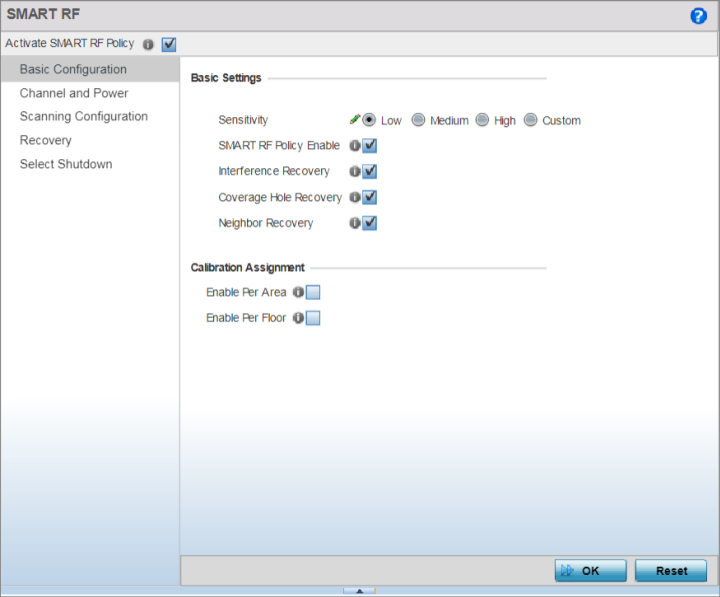To define a Smart RF policy:

| Sensitivity | Select a radio button corresponding to the desired Smart RF sensitivity. The options
include , Medium, High, and Custom. Medium is the default setting. The Custom option allows an administrator to adjust the parameters and thresholds for Interference Recovery, Coverage Hole Recovery, and Neighbor Recovery. Using the Low, Medium (recommended), and High settings still allows these features to be utilized. |
| Smart RF Policy Enable | Select this option to enable Smart RF for immediate inclusion within an RF Domain. Smart RF is enabled by default. |
| Interference Recovery | Select this option to enable compensations from neighboring radios when radio interference is detected. When interference is detected, Smart RF first determines the power increase needed based on the signal to noise ratio for a client (as seen by the access point radio). If a client‘s signal to noise value is above the threshold, the transmit power is increased until the signal to noise rate falls below the threshold. This option is enabled by default. |
| Coverage Hole Recovery | Select this option to enable coverage compensation from neighboring radios when a radio coverage hole is detected within the Smart RF supported radio coverage area. When a coverage hole is detected, Smart RF first determines the power increase needed based on the signal-to-noise ratio for a client as seen by the access point radio. If a client‘s signal-to-noise value is above the threshold, the transmit power is increased until the signal-to-noise rate falls below the threshold. This option is enabled by default. |
| Neighbor Recovery | Select this option to enable Neighbor Recovery when a failed radio is detected within the Smart RF supported radio coverage area. Smart RF can provide automatic recovery by instructing neighboring APs to increase their transmit power to compensate for the coverage loss. Neighbor Recovery is enabled by default when the sensitivity setting is Medium. |